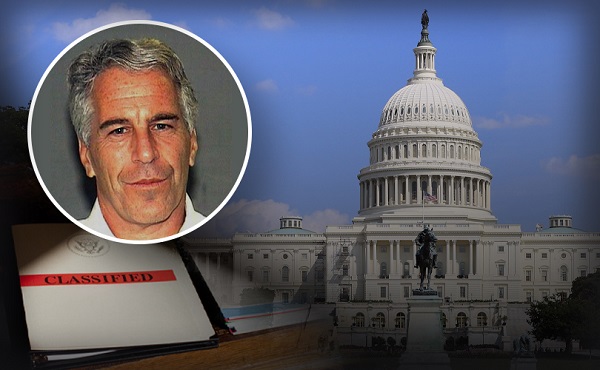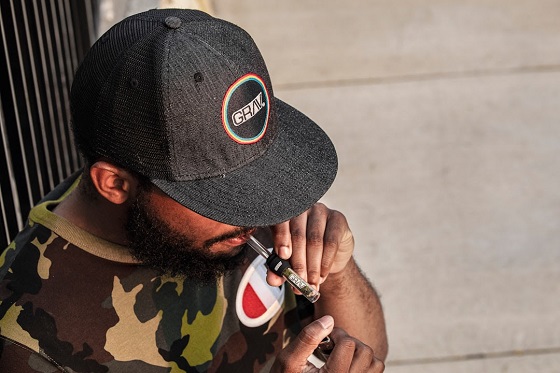Crime
Hybrid threats, broken borders, and organized chaos—transnational organized crime in Canada
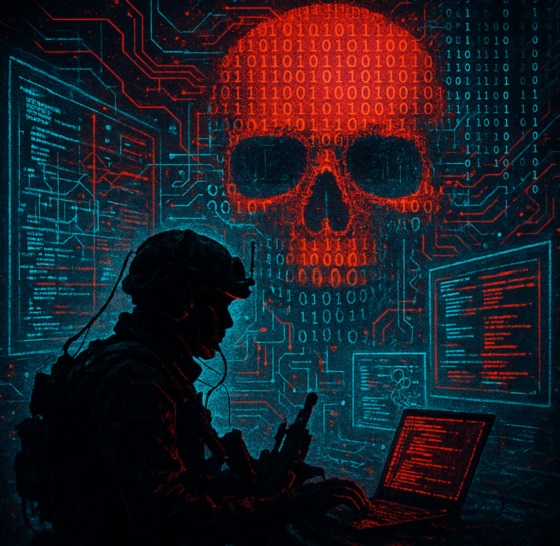
By Peter Copeland & Cal Chrustie for Inside Policy
Transnational organized crime is ‘no longer just criminal,’ it’s become a geopolitical weapon, says Chrustie.
As geopolitical tensions rise and domestic vulnerabilities deepen, Canada is increasingly being used as a conduit for foreign adversaries waging hybrid warfare against the United States and its allies.
From fentanyl pipelines and money laundering to campus radicalization and weak border enforcement, a concerning picture emerges of transnational organized crime (TOC) networks operating with strategic alignment to states like China, Iran, and others.
In this edition of Inside Policy, Peter Copeland, deputy director of domestic policy at the Macdonald-Laurier Institute, sits down with Cal Chrustie, a former RCMP senior intelligence officer with deep experience in national security and transnational crime.
Chrustie tells Copeland that TOC is “no longer just criminal,” it’s become a geopolitical weapon.
“It’s about destabilizing communities, overwhelming public services, and hollowing out social cohesion,” says Chrustie.
He explains that Canada is not presently well-positioned to respond to this threat.
“Canada’s legal framework is designed for a domestic, rule-of-law environment,” he says. “It’s ill-suited to confront global adversaries who don’t play by those rules.”
Their wide-ranging conversation reveals the structural, legislative, and cultural weaknesses that have left Canada uniquely vulnerable to hybrid warfare and interconnected threats—and explores what a meaningful response might look like.
Copeland: Let’s start with fentanyl. In 2023, the U.S. Drug Enforcement Administration estimated over 70,000 fentanyl-related deaths. A growing number of precursor chemicals are sourced from China and routed through networks in Mexico and increasingly Canada. How is fentanyl trafficking being used strategically by foreign actors?
Chrustie: There’s no denying the scale of fentanyl production in Canada. It far outpaces our internal consumption. While there’s uncertainty around the volume reaching the U.S.—and certainly exaggerated claims by some Americans—we know Canadian labs are supplying Australia in large quantities. The broader concern is that we don’t know the extent of what’s crossing into the U.S. from Canada because we’re not meaningfully tracking it. That lack of visibility alone is a serious national security concern. Furthermore, the media focus has typically been China, China, China. While there are obvious signs of Chinese cartels in play, but what’s often dismissed is the role of Iranian networks.
Copeland: You touched on the issue of gaps in our understanding. At MLI, we’ve documented the minimal capacity we have at our borders—limited personnel, a very small percentage of containers and vehicles physically inspected, and mostly randomized or intelligence-led searches. Given these limitations, how can we even estimate the scale of fentanyl or other cross-border activity?
Chrustie: It’s a mistake to overly focus on the border. It’s a choke point, yes, but seizures there are often the result of intelligence generated far from the physical crossing—through complex global investigations, intelligence operations, surveillance, profiling, informants, machine learning. The U.S. has robust systems for this. Canada doesn’t. So, pointing to low seizure rates at the border as evidence of low trafficking activity is misleading and isn’t overly helpful in understanding the threat. It’s more relevant in understanding what we don’t know.
Copeland: We’ve proposed mandating more information-sharing from importers and exporters to support intelligence-based inspections. What are your thoughts on this approach?
Chrustie: Transparency helps, but you must consider the risk of compliance failure. If bad actors have infiltrated parts of the supply chain—shipping firms, port operators, truckers—then even detailed regulations won’t suffice without enforcement. Foreign state actors have the cyber capabilities to manipulate these systems too. It reinforces the need to address the problem systemically, not just tactically, and appreciate corruption and compromised systems are reality, not just a possibility.
Copeland: So, more than just piecemeal fixes?
Chrustie: Absolutely. We need a strategic, whole-of-society approach. Canada hasn’t yet conducted a serious intellectual review of why our system isn’t working. Political leaders fear what they’ll find, because it would demand systemic overhauls. These systems must take into consideration the broader threat activities and their interconnectivity with corruption, electoral interference, espionage, misinformation, and threat finance. Unfortunately, these connections are largely ignored, along with the strategic recognition that national security has a symbiotic relationship with economic security. If we were to take seriously the impact of national security on countless aspects of our social fabric—from crime, and social trust, to economic security—we would have a much more robust approach to transnational organized crime.
Copeland: Let’s take a step back. Most people probably picture transnational organized crime as gangs seeking profit, often disconnected from foreign governments. But you’ve argued that TOC is used by hostile states as a weapon in hybrid warfare. What does that mean, and how should we reframe our understanding?
Chrustie: Hybrid warfare is the blending of military and non-military means to weaken or destabilize a target. For hostile states, transnational crime is a tool—just like cyberattacks or disinformation. China, Russia, Iran, North Korea—the CRINKs—use TOC to raise money, create chaos, and undermine our institutions. TOC is no longer just criminal—it’s geopolitical.
Copeland: So the fentanyl flooding North America isn’t just a public health disaster—it’s also a weapon?
Chrustie: That’s right. It’s about destabilizing communities, overwhelming public services, and hollowing out social cohesion. Just like the Soviets used propaganda and the KGB used disinformation, modern adversaries use drugs, money laundering, and crime networks to erode their adversaries from within.
Copeland: Is Canada the main target, or are we a launchpad to attack the U.S. and our allies?
Chrustie: Both. Threat actors don’t view the Five Eyes or NATO countries in isolation—they see the alliance. So, attacks on Canada are also attacks on the U.S., Australia, the UK, and vice versa. They exploit Canada’s weaknesses, especially in places like Vancouver, where strategic assets such as ports, shipping companies and supply chain infrastructure are key hybrid warfare targets and impact the national and economic security of our allies. In the case of Vancouver, the intent is to target the US and Mexico (i.e. North America), through Vancouver-based assets as it’s a location of lower risk to operate in.
Copeland: You mentioned encrypted phone networks. Could you elaborate?
Chrustie: At one point, more encrypted communication companies linked to TOC and terrorist financers were based in Vancouver than anywhere else in the world. These platforms were used globally—by cartels, arms traffickers, terrorists, state proxies. That tells you all you need to know about how Canada is perceived by adversaries.
Copeland: What structural weaknesses are they exploiting?
Chrustie: First, we lack a national security strategy. Other countries—Australia, the U.S.—have all-of-government approaches. We don’t. Second, our institutions are siloed. Policing is on the front line, but CSIS, CBSA, military and CSE aren’t always integrated. Third, our systems—immigration, legal, financial—are outdated and easily gamed. Finally, there’s our culture: we’ve been complacent about national security.
Copeland: What does a serious strategy look like?
Chrustie: It starts with clear national priorities: identifying top threat actors (China, Iran, Russia, North Korea), coordinating agencies, aligning law enforcement and intelligence. It also means acknowledging our legal framework can’t always meet the challenge. Disruption and foreign operations—working with allies to stop threats before they reach our shores—will be critical. Also, the historical paternalist approach of governments and bureaucrats—of “we know best, and we won’t discuss these issues in public, it’s too sensitive and we are the experts,”—I think that’s dated, and China, Russia, Iran and North Korea are the biggest fans of this arrogant and naïve thinking. We need to shift immediately, engage the communities, business leaders, the legal community, and others. The solutions are in the communities, not in the siloed offices of governments.
Copeland: That raises a point about legal constraints. Are you saying our rights framework is part of the challenge?
Chrustie: Yes. Canada’s legal framework is designed for a domestic, rule-of-law environment. It’s ill-suited to confront global adversaries who don’t play by those rules. We either need carve-outs with enhanced powers for TOC-related and foreign threat activities investigations, or we need to rely more on foreign-facing disruption efforts—working abroad, with allies and accept prosecutions are secondary in measuring success. We can’t pretend that our current legal framework is workable, as the threat actors have figured this out and are taking advantage of it.
Copeland: Let’s talk about antisemitism and extremism. In the past year, we’ve seen a sharp rise on university campuses. What’s driving it?
Chrustie: Some of it is ideological, but we’re ignoring the role of transnational organized crime and foreign money. Iranian networks, for example, have long been tied to money laundering and extremist financing. These aren’t disconnected trends. The same threat actors behind fentanyl and money laundering are often involved in radicalization efforts. These are the same networks aligned to China and the Mexican cartels; they don’t operate in boxes. An old school bureaucratic lens on terrorism from the middle east, or terrorist financing analysis from a regional lens, is placing Canadians and others at risk.
Copeland: You’re suggesting that protests, radical activism, even antisemitic incidents may be downstream of the same networks enabling fentanyl and laundering billions?
Chrustie: Exactly. We’re talking about convergence. These networks exploit every vulnerability—from public health to political discourse. Failing to connect the dots between TOC, extremism, and foreign interference means we’re always reacting too late. Let’s look at the historic HSBC case, in which hundreds of millions had been laundered by the Sinaloa cartel due to lax anti-money laundering compliance by the bank, resulting in a $1.9 billion fine being levied against it. The same cartel networks that emerged through the HSBC probe are engaged in Canada today. Experts need to focus on what they don’t know versus what they think they know—look at the strategic and historical activities, accept that we are not in the middle east and accept the complexities of TOC of other activities, including terrorism and extremism.
Copeland: Lastly Calvin, I want to talk about the big picture. Evidently, Canada is seen as an easy target by our adversaries. What structural weaknesses are they exploiting?
Chrustie: This is where I think about it in four layers: strategy, structure, systems, and culture.
First, strategy. We lack a cohesive, public national security strategy. Unlike the United States or Australia, Canada doesn’t clearly define TOC as a strategic national threat. We don’t have a single, unified doctrine coordinating our federal agencies—police, intelligence, border services, foreign affairs. And without that, every department works to its own mandate, and TOC thrives in those gaps. We need to name top threat actors—China, Iran, Russia, North Korea—and make their proxies part of the strategy. We also need to shift from a policing mindset to one focused on disruption and prevention, including operations overseas.
Second, structures. Right now, the RCMP is expected to shoulder most of the burden. But that’s unsustainable. We need an all-agency model—where the Canadian Security Intelligence Service (CSIS), Canada Border Services Agency (CBSA), Financial Transactions and Reports Analysis Centre of Canada (FINTRAC), and Communications Security Establishment (CSE), the Department of Justice, Global Affairs, and others are all responsible for TOC enforcement and disruption. In the U.S., agencies are compelled to coordinate on TOC. In Canada, they’re siloed. And without a lead co-ordinating body or national TOC co-ordinator, those silos are growing.
Third, systems. Our legal system is outdated. Charter protections, disclosure rules from cases like Stinchcombe, and overly complex evidentiary requirements mean that complex cases fall apart or never get prosecuted. We also lack a dedicated foreign intelligence service like the CIA or MI6. Our immigration system is overwhelmed—there’s no way current vetting can match immigration volumes. And our financial system, particularly in real estate and casinos, has become a playground for laundered money. We need a legal and regulatory framework built for transnational threats, not 1980s-era domestic crime.
Fourth, culture. This is the most overlooked piece. Canadians are culturally indifferent to national security. We’ve taken a maternalistic approach—shielding the public from harsh realities, hoping to avoid panic or xenophobia. But that silence has allowed foreign actors to operate here with little resistance. Until we educate the public and foster a culture that values sovereignty and security, there will be no pressure to change the strategy, structure, or systems.
Copeland: Final thoughts?
Chrustie: We need to stop thinking of TOC as a law enforcement issue. It’s a military, intelligence, legal and most importantly, an all-Canada problem. There is no room for spectators. We need to stop thinking its someone isolated from all other threats and threat actors. It’s a national security crisis and its part of the slow play to weaken our political, social, and economic structures. We are years behind our allies. If we don’t get serious—strategically, structurally, and culturally—we will pay the price.
Copeland: Here’s my takeaways: In summary, we can see that Canada is uniquely vulnerable to transnational organized crime which makes it vulnerable for the broader foreign threats. Our agencies are siloed, and we lack a comprehensive strategy to effectively address issues like drug and human trafficking, to the presence of radicalization and extremism on our campuses. What’s more, our legal framework is such that we don’t have the same kinds of tools as our allies, that allows law enforcement, military, and intelligence agencies to act swiftly where issues of national security are in play.
Peter Copeland is deputy director of domestic policy at the Macdonald-Laurier Institute.
Cal Chrustie is a former RCMP senior intelligence officer with deep experience in national security and transnational crime.
Crime
How Global Organized Crime Took Root In Canada
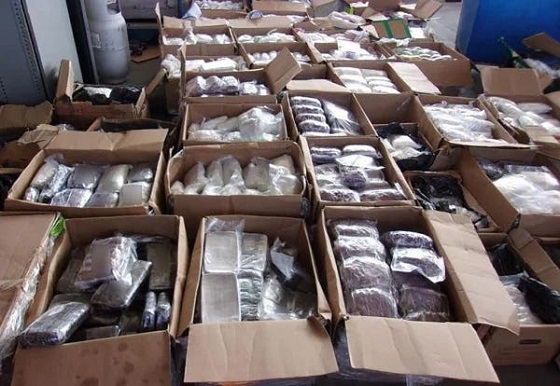
From the Frontier Centre for Public Policy
Weak oversight and fragmented enforcement are enabling criminal networks to undermine Canada’s economy and security, requiring a national-security-level response to dismantle these systems
A massive drug bust reveals how organized crime has turned Canada into a source of illicit narcotics production
Canada is no longer just a victim of the global drug trade—it’s becoming a source. The country’s growing role in narcotics production exposes deep systemic weaknesses in oversight and enforcement that are allowing organized crime to take root and threaten our economy and security.
Police in Edmonton recently seized more than 60,000 opium poppy plants from a northeast property, one of the largest domestic narcotics cultivation operations in Canadian history. It’s part of a growing pattern of domestic production once thought limited to other regions of the world.
This wasn’t a small experiment; it was proof that organized crime now feels confident operating inside Canada.
Transnational crime groups don’t gamble on crops of this scale unless they know their systems are solid. You don’t plant 60,000 poppies without confidence in your logistics, your financing and your buyers. The ability to cultivate, harvest and quietly move that volume of product points to a level of organization that should deeply concern policymakers. An operation like this needs more than a field; it reflects the convergence of agriculture, organized crime and money laundering within Canada’s borders.
The uncomfortable truth is that Canada has become a source country for illicit narcotics rather than merely a consumer or transit point. Fentanyl precursors (the chemical ingredients used to make the synthetic opioid) arrive from abroad, are synthesized domestically and are exported south into the United States. Now, with opium cultivation joining the picture, that same capability is extending to traditional narcotics production.
Criminal networks exploit weak regulatory oversight, land-use gaps and fragmented enforcement, often allowing them to operate in plain sight. These groups are not only producing narcotics but are also embedding themselves within legitimate economic systems.
This isn’t just crime; it’s the slow undermining of Canada’s legitimate economy. Illicit capital flows can distort real estate markets, agricultural valuations and financial transparency. The result is a slow erosion of lawful commerce, replaced by parallel economies that profit from addiction, money laundering and corruption. Those forces don’t just damage national stability—they drive up housing costs, strain health care and undermine trust in Canada’s institutions.
Canada’s enforcement response remains largely reactive, with prosecutions risk-averse and sentencing inadequate as a deterrent. At the same time, threat networks operate with impunity and move seamlessly across the supply chain.
The Edmonton seizure should therefore be read as more than a local success story. It is evidence that criminal enterprise now operates with strategic depth inside Canada. The same confidence that sustains fentanyl synthesis and cocaine importation is now manifesting in agricultural narcotics production. This evolution elevates Canada from passive victim to active threat within the global illicit economy.
Reversing this dynamic requires a fundamental shift in thinking. Organized crime is a matter of national security. That means going beyond raids and arrests toward strategic disruption: tracking illicit finance, dismantling logistical networks that enable these operations and forging robust intelligence partnerships across jurisdictions and agencies.
It’s not about symptoms; it’s about knocking down the systems that sustain this criminal enterprise operating inside Canada.
If we keep seeing narcotics enforcement as a public safety issue instead of a warning of systemic corruption, Canada’s transformation into a threat nation will be complete. Not because of what we import but because of what we now produce.
Scott A. McGregor is a senior fellow with the Frontier Centre for Public Policy and managing partner of Close Hold Intelligence Consulting Ltd.
Crime
Cocaine, Manhunts, and Murder: Canadian Cartel Kingpin Prosecuted In US
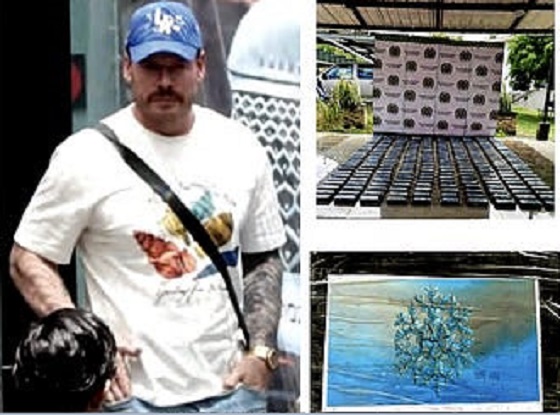
From Caledon to Mecca and Medellín: U.S. Says Toronto ‘Cocaine Lawyer’ Used Encrypted Chats Inside Wedding’s Murder Conspiracies
On the path to becoming the first Canadian of genuine Latin American cartel stature — a man the FBI has likened to a “modern-day iteration of Pablo Escobar” — Ryan Wedding did not simply exploit Canada’s borders, ports and highways to move cocaine, methamphetamine and fentanyl.
Prosecutors say he became the single largest cocaine importer into Canada, building a billion-dollar enterprise by mastering cryptocurrency money-laundering, legal strategy, paramilitary training and the kind of hardened operational security usually associated with state intelligence agencies.
It was an operation, U.S. authorities now allege, in which a brash Toronto criminal lawyer not only counselled murder and helped arrange bribes, but also tapped into Canadian police evidence to glean information about a contracted assassination that collapsed into tragedy — the killing of innocent people mistaken for the family of an Indo-Canadian narco-trucker.

A stunning 50-page indictment unsealed in California this week explains how Wedding allegedly discovered that a trusted associate in both cocaine trafficking and crypto-based money-laundering — identified only as “Victim A” in the document — had quietly become a federal informant. The murdered government witness is Jonathan Acebedo-Garcia, a Colombian-Canadian who appears in prosecutors’ Tether-crypto flow chart as a key node in Wedding’s KuCoin-centred laundering network.
According to the indictment, Wedding then turned to Toronto lawyer Deepak Balwant Paradkar — “a dual Indian-Canadian citizen” listed under aliases including “cocaine_lawyer” — and, together with his top lieutenant Andrew Clark, used encrypted Threema chats to plan Acebedo-Garcia’s murder in Medellín. For Paradkar, now under arrest in Canada and facing extradition, the brutality alleged in the filing is not confined to a distant Colombian restaurant. The indictment also places him at the centre of two other crises in Wedding’s empire: a 521-kilogram cocaine seizure in Arkansas, and a botched assassination in Caledon, Ontario, that left an innocent Indo-Canadian family dead.
The Arkansas strand starts on October 1, 2024, when Canadian truckers Maninderjit Singh Dhillon and Ranjodh Singh were stopped in Hazen, Arkansas, with “approximately 521 kilograms” of cocaine. That same day, Wedding told Clark on Threema that their load had been seized and sent Dhillon’s name. Clark then asked — in coded language — if Wedding wanted Paradkar “to monitor Dhillon and Singh’s arrests,” and Wedding agreed, suggesting that an American lawyer be used to obfuscate the Toronto lawyer’s role.
In a Threema group chat with Clark and a transport co-conspirator, Paradkar allegedly asked for the drivers’ names and licences, said he would “look into it,” and asked if there were “any relatives” he could contact. The key line in the indictment states:
“On October 1, 2024, in the Threema group chat and using coded language, defendant PARADKAR advised that he was calling law enforcement to obtain information about Dhillon and Singh’s arrests.”
Prosecutors say Paradkar later reported that he had located Singh in prison but not Dhillon, directed that Singh’s brother be told he was Singh’s lawyer so he could get the arrest report, and called Singh about his arrest “while Clark covertly listened in.”
When Clark and the co-conspirator began “discussing murdering Dhillon” on October 3, Paradkar allegedly told them “to discuss the matter on a different chat without him present and to delete any and all discussion of the murder plot.”
He is also accused of sending Clark discovery on the Arkansas case, drafting questions over WhatsApp, then deleting the messages and turning on disappearing-message settings before calling Dhillon again with Clark listening.
The same document links Wedding and Clark to an earlier hit order on another truck driver, CC-1, a driver they believed had stolen a massive load. Under a section headed “Victims B, C, and D,” prosecutors write that: “On or before November 20, 2023, defendant Wedding and Clark issued an order to kill a driver co-conspirator whom they believed stole 300 kilograms of cocaine from them.”
According to the indictment, members of a Canadian-based assassin crew then “broke into a rental property in Caledon inhabited by Victims B, C, and D” and “shot and killed Victims B and C and shot and wounded Victim D, mistakenly believing that they were CC-1’s family members.”
Local coverage at the time identified the slain couple as Jagtar Sidhu, 57, and his wife, Harbhajan Sidhu, 57, both killed by gunshot wounds after officers were called to a late-night shooting. Their daughter was rushed to hospital in serious but stable condition. In an interview, the couple’s son — speaking on condition of anonymity — said he had been at work when the shooting took place and that his parents and sister were shot multiple times. He said his parents had travelled from India to visit him and his sister, who had come to Canada as international students.
Nearly ten months later, Paradkar is again alleged to have somehow obtained sensitive information and channelled it from Canadian police back to cartel command:
“On September 11, 2024, via Threema, defendant PARADKAR sent Clark screenshots of evidence obtained by the Ontario Provincial Police during its investigation of the shootings of Victims B, C, and D.”
Before turning back to the Medellín murder allegedly counselled by Paradkar, the indictment sets out the staggering scale of the enterprise that made Acebedo-Garcia so valuable — and, allegedly, so expendable.
Prosecutors describe the Wedding Criminal Enterprise as “a billion-dollar drug trafficking organization and the largest supplier of cocaine to Canada,” operating simultaneously in “Mexico, Colombia, Canada, and the United States, among other countries.” They say the group sourced cocaine from Colombia, “cooking and testing it in ‘cocaine kitchens’ run collaboratively with a Colombian neo-paramilitary group and drug cartel,” then working “in conjunction with members and associates of prominent Mexican drug cartels” to move “hundreds of kilograms of cocaine from Colombia to Mexico at a time” by boat and plane.
In this telling, Southern California is the hub between Latin coca fields and Canadian and American drug dens.
“The Southern California Counties of Los Angeles, San Bernardino, and Riverside generally served as the ‘hub’ where the Wedding Criminal Enterprise’s cocaine was stored before being conveyed by Canadian drug transportation networks to final destinations in Canada and other American states, with the cocaine predominantly being distributed in Canada.”
The indictment says the enterprise’s purposes included “establishing control over the Canadian drug trade” and “violently retaliating” against anyone perceived to be co-operating with law enforcement.
As reported previously by The Bureau, the trucks and routes tasked by Wedding were controlled by Indo-Canadian crime networks. The U.S. government says that the Toronto lawyer Paradkar “introduced Wedding to the drug traffickers that have been moving Wedding’s cocaine and has also helped Wedding with bribery and murder.”
In late summer 2024, Acebedo-Garcia — Victim A — was still a trusted intermediary inside that system. Prosecutors allege that: “Between August 15, 2024, and September 6, 2024, using Victim A as an intermediary, defendant WEDDING purchased 300 kilograms of cocaine to be shipped from Colombia to Mexico.”
A Colombian lab manager, Carlos Eduardo Riascos, is then said to have received the order “for 300 kilograms of cocaine” from Wedding, and on September 11, 2024, to have been paid about two billion Colombian pesos which “had been converted from cryptocurrency” for “approximately 300 kilograms of cocaine.” Within weeks, Riascos allegedly launched a shipment of “approximately 240 bricks containing cocaine” out of Cali.
In parallel, U.S. authorities say they were mapping the Tether flows linked to this cargo. The truncated flow chart in the indictment shows large transfers moving from KuCoin accounts associated with financier Rasheed Pascua Hossain of Vancouver, and others into a hub wallet tied to Wedding — including a 564,571-USDT transfer directly from Wedding to Victim A. Those arrows, prosecutors argue, capture the way Acebedo-Garcia sat at the intersection of Wedding’s cocaine supply and his crypto-laundering machine.
On October 17, 2024, that world was exposed. A first superseding indictment, “Wedding I,” was unsealed in the same federal court, charging Wedding and Clark in a continuing-criminal-enterprise case. According to the new filing, it was in the aftermath of that disclosure — once it was clear that Victim A had become a co-operating witness — that the Toronto lawyer allegedly proposed killing him as a legal strategy.
“On or after October 17, 2024, defendant Paradkar advised defendant Wedding and Clark that if Victim A was killed, the charges against them in Wedding I and related extradition proceedings would necessarily be dismissed,” the record says.
In a prior exclusive report, sourced from U.S. law enforcement, The Bureau revealed that some American investigators believed Canadian police provided little assistance as bodies mounted.
“We tried to work with RCMP on Wedding too, and they said, ‘No,’” a source aware of probes from three separate U.S. agencies said. “He’s killed God knows how many. But the RCMP threw up roadblocks. Just in the Greater Toronto Area alone, people were falling once a week. Especially when the heat was getting closer to this guy, he started killing all the people he knew. And I think there were seriously missed opportunities.”
From Mecca to Medellín
Prosecutors say Wedding responded by placing “a bounty of up to $5 million USD on Victim A in exchange for any person locating and killing Victim A.” He allegedly enlisted a Laval, Que., hitman, Atna Ohna, described as “a hired sicario”; a Colombian madame, Carmen Yelinet Valoyes Florez, who “operated a network of commercial sex workers”; a Colombian sex worker, Daniela Alejandra Tejeda, who provided Victim A’s personal information; and a cluster of Canadian intermediaries and unidentified locals in Colombia and Saudi Arabia.
Once the U.S. government’s first indictment against Wedding was unsealed and Paradkar allegedly advised that killing Victim A would “necessarily” collapse the case, the manhunt for Acebedo-Garcia moved quickly. Florez, operating a Medellín-based commercial sex-work network that included Tejeda, allegedly used that network to track Acebedo-Garcia’s movements and glean intimate details — addresses, routines, contacts — that could be passed back to Mexico.
Canadian associates, meanwhile, were allegedly funnelling information from home. Defendant Ramon Basilio Demorizi, a Canadian resident, is accused of trying to locate Victim A through Edwin Basora-Hernandez, a Montréal-based reggaeton artist. Basora-Hernandez is alleged to have supplied Victim A’s contact information and to have told Demorizi — and, indirectly, Wedding and Paradkar — that Canadian law enforcement had approached him seeking Victim A’s whereabouts. According to one overt act, it was at this point that Wedding himself stepped into the hunt.
Assuming the persona of a lawyer, he allegedly arranged a conference call with Basora-Hernandez and his real-life legal counsel, Deepak Paradkar, during which Basora-Hernandez revealed that Canadian law-enforcement officers had approached him for information about the fugitive witness’s whereabouts.
In January 2025, Clark allegedly hired a Canadian associate, Ahmad Nabil Zitoun, to physically hunt Acebedo-Garcia for “approximately $10,000 CAD plus expenses.” Zitoun is accused of travelling to Medellín and then to Mecca, Saudi Arabia, trying to spot the fugitive witness. While he was in Mecca, the indictment says, Clark offered him the actual murder contract. Zitoun declined — but still received “approximately $40,000 CAD for attempting to locate Victim A” once he returned.
Throughout these weeks, the document alleges, the conspirators were sending each other surveillance pictures of Acebedo-Garcia.
The assassination itself, on January 31, 2025, reads like a textbook cartel hit. One unidentified conspirator, LNU 1, is described as a motorcyclist who “conducted reconnaissance of Victim A by following Victim A to a restaurant in Medellín before Victim A was murdered.” Another, LNU 2, is said to have been the shooter: “Defendant LNU 2, a motorcyclist, shot Victim A approximately five times in the head while he was eating at the Restaurant.”
A third, LNU 3, allegedly ferried the gunman away; a fourth, LNU 4, is described as a photographer who “cased the Restaurant” beforehand and “photographed Victim A’s dead body” afterwards; and a fifth, LNU 5, picked the photographer up and helped him flee along the same escape route as the shooter.
Within minutes, prosecutors say, images of the killing were being sent back up the chain. On January 31, Wedding allegedly used Threema to inform Clark that “Victim A was dead” and to send a photograph of his corpse.
And then the murder became content. Defendant Gursewak Singh Bal, a Mississauga man described as the founder of “the Dirty News” urban news outlet, is accused of posting a celebratory Instagram story showing the restaurant and the lower half of a body, with the caption: “[Victim A] down…” and “BOOM! Headshot.” A longer Dirty News post, quoted in the indictment, called Acebedo-Garcia “one of the informants involved in dismantling Ryan ‘Snowboarder aka SB’ Wedding’s transnational organization/criminal network” and claimed “there were bounties being placed on every individual involved in ‘snitching’ on the kingpins operations,” including seven-figure “hits.”
more to come on this breaking story
The Bureau is a reader-supported publication.
To receive new posts and support my work, consider becoming a paid subscriber.
-
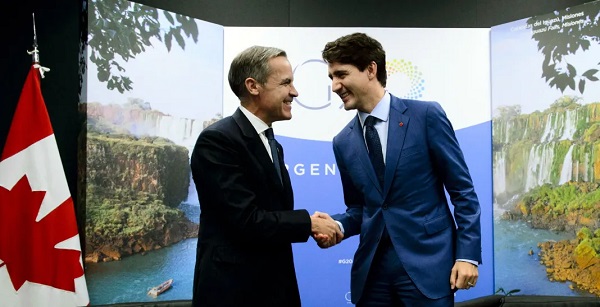
 Carbon Tax15 hours ago
Carbon Tax15 hours agoCarney fails to undo Trudeau’s devastating energy policies
-

 Business11 hours ago
Business11 hours agoBudget 2025: Ottawa Fakes a Pivot and Still Spends Like Trudeau
-

 COVID-192 days ago
COVID-192 days agoFreedom Convoy protestor Evan Blackman convicted at retrial even after original trial judge deemed him a “peacemaker”
-

 Alberta2 days ago
Alberta2 days agoAlberta bill would protect freedom of expression for doctors, nurses, other professionals
-
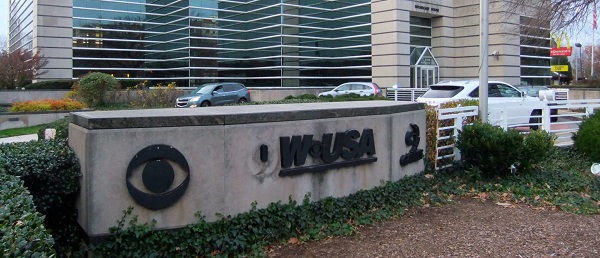
 Daily Caller2 days ago
Daily Caller2 days agoBari Weiss Reportedly Planning To Blow Up Legacy Media Giant
-

 Daily Caller2 days ago
Daily Caller2 days agoMTG Says She’s Resigning From Office
-

 Daily Caller2 days ago
Daily Caller2 days agoTrump Gives Zelenskyy Until Thanksgiving To Agree On Peace Deal, With U.S. Weapons And Intel On The Line
-

 Business1 day ago
Business1 day agoI Was Hired To Root Out Bias At NIH. The Nation’s Health Research Agency Is Still Sick






